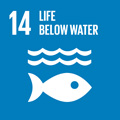- Docente: Marco Cantonati
- Credits: 6
- SSD: BIO/02
- Language: Italian
- Teaching Mode: Traditional lectures
- Campus: Bologna
- Corso: Second cycle degree programme (LM) in Biodiversity and Evolution (cod. 5824)
-
from Feb 24, 2025 to May 12, 2025
Learning outcomes
The main educational objective of this course is to offer an advanced-level overview of the characteristics of all the main groups of photoautotrophic organisms, discussed by identifying the key morphological, physiological, functional, ecological adaptations, which are also the basis for the use of these organisms as indicators and proxies in environmental sciences. Special emphasis is on the acquisition of professional knowledge on distinctive characters, procedures, materials and resources (texts, websites, etc.) for the taxonomic identification of organisms of the groups considered, i.e.: cyanoprokaryotes, diatoms, all the main algal groups, bryophytes (hornworts, liverworts, mosses), tracheophytes (vascular plants: lycophytes, ferns, Gymnosperms, Angiosperms).
Course contents
Taxonomy, systematics, evolution. Biological events in geological time. Cyanoprokaryotes (and Prochlorophytes). Endosymbiosis. Red algae. Cryptophytes. Dinoflagellates. Algal blooms. Xanthophytes. Diatoms. Chrysophytes. Brown alagae. Euglenophytes. Green algae. Lichens. Desmidiaceae. Carophytes. Algal groups believed to be ancestors of land plants. Adaptations of plants to life on land. Bryophytes (hornworts, liverworts, acrocarpal and pleurocarpal mosses). Pteridophytes (horsetails, lycopods, spikemosses, quillworts, true ferns and life cycle). Gymnosperms (cycadophytes, Ginkgo, gnetophytes, conifers). Angiosperms: origin, basal groups, central groups. Insights on: Magnoliaceae; Liliaceae; Orchidaceae; Arecacee; Poaceae, Cyperaceae, Juncaceae; Ranunculaceae; Euphorbiaceae; Fabaceae; Rosaceae; Myrtaceae; Brassicaceae; Cactaceae; Ericaceae; Lamiaceae, Scrophulariaceae; Solanaceae; Asteraceae; Apiaceae. Selected Angiosperm families relevant to temperate deciduous forest. Selected families of Angiosperms relevant to inland waters. Microscopy laboratories: - Algae on the rocky shores of Lake Garda: green algae, red algae, diatoms (including techniques for making permanent slides and their observation), angiosperms. - Visit to the Botanical Garden: the various sectors of the Botanical Garden are used for a review with live materials on all the main groups covered in the course; thanks to materials collected in the fountain, in the pondlet and in the various tanks, the taxonomy of genera and species of Lemnoideae is explored in depth, also with microscope observations. - Siliceous spring of the Adamello-Brenta Natural Park: liverworts, mosses, ferns, cyanoprokaryotes, gymnosperms; for cyanoprokaryotes focus on morpho-functional structures that optimize the assimilation of macronutrients (e.g., heterocytes, calyptra); staining to highlight the possible presence of phosphatase (BCIP). Excursion to the petrifying spring of Labante: it allows you to see in nature (even with a portable microscope) representatives of all the main groups covered in the course, from cyanoprokaryotes to angiosperms. Practical activity in the field at the Parco dei Gessi Bolognesi focused on the analysis of plant diversity (taxonomic level) and, specifically, on the observation and identification of angiosperms.
Readings/Bibliography
Study materials on Virtuale.
Strasburger – Botanica, Evoluzione, Sistematica ed Ecologia (Vol. II), 10ª ed. Volume 2 – EVOLUZIONE, SISTEMATICA ED ECOLOGIA
Judd W.S. , Christopher S. Campbell, Elizabeth A. Kellogg, Peter F. Stevens, Michael J. Donoghue. 2019. Botanica Sistematica - Un approccio filogenetico. ISBN: 978-88-299-2998-6. 708 pp.
Teaching methods
Frontal lessons. Lessons-laboratories (lessons with PowerPoint and possibility of observing materials relating to the taxonomic groups treated). Microscopy laboratories with preparations and stains.
Excursions and practical activity in the field.
In consideration of the types of activities and teaching methods adopted, the attendance of this training activity requires the performance of all students of modules 1 and 2 in e-learning mode and participation in module 3 of specific training on safety and health in the places of study. Information on dates and methods of attendance of module 3 can be consulted in the specific section of the degree program website.
Assessment methods
Oral exam with at least three main questions, one of which refers to laboratories, laboratory-lessons, or excursions.
Possibility of presenting (at least the evening before the exam) a report (preferably in PowerPoint or Word format), with extensive iconography, on one of the laboratories or excursions. If evaluated positively, it improves the final exam score.
Teaching tools
PowerPoint presentations. Selected videos. Fresh materials relating to the taxonomic groups treated, even outside of laboratories and laboratory-lessons.
Equipment for laboratory and field exercises (including equipment for sampling water and sediment and for measuring ecological factors to characterize the habitats of photoautotrophic communities).
Office hours
See the website of Marco Cantonati
SDGs



This teaching activity contributes to the achievement of the Sustainable Development Goals of the UN 2030 Agenda.
